-
 Bitcoin
Bitcoin $119800
1.38% -
 Ethereum
Ethereum $3873
3.25% -
 XRP
XRP $3.247
1.85% -
 Tether USDt
Tether USDt $1.001
0.02% -
 BNB
BNB $840.4
5.94% -
 Solana
Solana $190.0
2.55% -
 USDC
USDC $1.000
0.03% -
 Dogecoin
Dogecoin $0.2433
2.69% -
 TRON
TRON $0.3197
-0.05% -
 Cardano
Cardano $0.8367
1.39% -
 Sui
Sui $4.327
3.11% -
 Hyperliquid
Hyperliquid $44.00
0.31% -
 Stellar
Stellar $0.4461
1.76% -
 Chainlink
Chainlink $19.25
4.61% -
 Hedera
Hedera $0.2941
3.90% -
 Bitcoin Cash
Bitcoin Cash $598.4
6.89% -
 Avalanche
Avalanche $26.19
4.67% -
 Litecoin
Litecoin $115.1
0.50% -
 Shiba Inu
Shiba Inu $0.00001427
1.55% -
 Toncoin
Toncoin $3.379
2.01% -
 UNUS SED LEO
UNUS SED LEO $8.966
-0.16% -
 Ethena USDe
Ethena USDe $1.001
0.02% -
 Uniswap
Uniswap $11.04
4.16% -
 Polkadot
Polkadot $4.239
2.00% -
 Monero
Monero $324.6
0.36% -
 Bitget Token
Bitget Token $4.672
2.46% -
 Pepe
Pepe $0.00001294
2.69% -
 Dai
Dai $0.0000
0.01% -
 Cronos
Cronos $0.1443
2.71% -
 Aave
Aave $302.9
1.98%
How to calculate OKX contract fees
When trading futures contracts on OKX, you will incur a variety of fees, including trading fees, maker/taker fees, funding fees, margin funding fees, withdrawal fees, and deposit fees.
Nov 10, 2024 at 11:26 pm

How to Calculate OKX Contract Fees
Futures contracts are financial agreements to buy or sell an asset at a future date and price. These contracts are traded on exchanges, such as OKX, and can be used to hedge against risk or speculate on the future price of an asset.
Understanding OKX Contract Fees
When trading futures contracts on OKX, you will need to pay a variety of fees. These fees can include:
- Trading fees: Fees charged by the exchange for each trade you make.
- Maker/taker fees: Fees charged based on whether you are the maker or taker of a trade.
- Funding fees: Fees paid or received to keep futures contracts in line with the spot market price.
Calculating Trading Fees
Trading fees on OKX are charged based on a tiered system. The higher your trading volume, the lower your trading fees. The trading fees for OKX futures contracts are as follows:
- Tier 1: 0.01%
- Tier 2: 0.008%
- Tier 3: 0.006%
- Tier 4: 0.004%
- Tier 5: 0.002%
To calculate your trading fees, simply multiply your trade volume by the corresponding trading fee rate. For example, if you trade 100,000 USDT worth of BTC futures contracts, your trading fees would be 100,000 * 0.01% = 10 USDT.
Calculating Maker/Taker Fees
Maker fees are charged to users who place limit orders that add liquidity to the order book. Taker fees are charged to users who place market orders that immediately execute against existing limit orders.
The maker/taker fees for OKX futures contracts are as follows:
- Maker fees: 0.02%
- Taker fees: 0.04%
To calculate your maker/taker fees, simply multiply your trade volume by the corresponding fee rate. For example, if you place a limit order that adds 100,000 USDT worth of BTC futures contracts to the order book, your maker fee would be 100,000 0.02% = 2 USDT. If you then place a market order that immediately executes against your limit order, your taker fee would be 100,000 0.04% = 4 USDT.
Calculating Funding Fees
Funding fees are paid or received to keep futures contracts in line with the spot market price. When the futures contract price is trading at a premium to the spot market price, traders who are long the contract will pay funding fees to traders who are short the contract. Conversely, when the futures contract price is trading at a discount to the spot market price, traders who are short the contract will pay funding fees to traders who are long the contract.
The funding fees for OKX futures contracts are calculated based on a variety of factors, including the difference between the futures contract price and the spot market price, the time to expiry of the contract, and the interest rate.
To calculate your funding fees, you can use the following formula:
Funding fee = Futures contract price - Spot market price / Time to expiry of contract * Interest rateFor example, if the BTC futures contract price is trading at $50,000 and the spot market price is trading at $49,000, the funding fee would be (50,000 - 49,000) / 365 * 0.05 = 0.2739 USDT per day.
Other Fees
In addition to the fees listed above, you may also need to pay other fees when trading futures contracts on OKX. These fees can include:
- Margin funding fees: Fees charged for borrowing funds to margin trade.
- Withdrawal fees: Fees charged for withdrawing funds from your OKX account.
- Deposit fees: Fees charged for depositing funds to your OKX account.
It is important to factor all of these fees into your trading strategy to ensure that you are not overpaying for your trades.
Steps to Calculate OKX Contract Fees
Here are the steps to calculate OKX contract fees:
- Determine your trading volume. This is the total value of the contracts you are trading.
- Determine your trading fee tier. This is based on your trading volume.
- Calculate your trading fees. Multiply your trading volume by the corresponding trading fee rate.
- Determine your maker/taker status. This is determined by the type of order you place.
- Calculate your maker/taker fees. Multiply your trade volume by the corresponding maker/taker fee rate.
- Calculate your funding fees. This is based on the difference between the futures contract price and the spot market price, the time to expiry of the contract, and the interest rate.
- Factor in other fees. This can include margin funding fees, withdrawal fees, and deposit fees.
By following these steps, you can
Disclaimer:info@kdj.com
The information provided is not trading advice. kdj.com does not assume any responsibility for any investments made based on the information provided in this article. Cryptocurrencies are highly volatile and it is highly recommended that you invest with caution after thorough research!
If you believe that the content used on this website infringes your copyright, please contact us immediately (info@kdj.com) and we will delete it promptly.
- Bitcoin's Potential Final Rally: Decoding Historical Data and Future Projections
- 2025-07-28 06:30:11
- BlockDAG, XRP, and Utility-Driven Growth: A New Era for Crypto?
- 2025-07-28 06:30:11
- Litecoin's ADX Crossover: Rally Potential or False Dawn?
- 2025-07-28 06:50:11
- Arctic Pablo Coin: Meme Coin Mania and Presale Buzz in 2025
- 2025-07-28 06:50:11
- Arctic Pablo: Meme Coin Mania or ROI Rocket?
- 2025-07-28 06:55:11
- Worldcoin's Wild Ride: Uptrend Battles Resistance Amidst Regulatory Waves
- 2025-07-28 07:00:12
Related knowledge
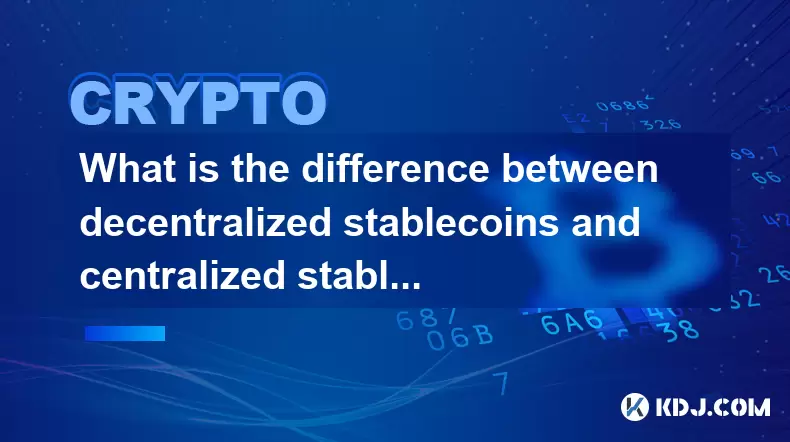
What is the difference between decentralized stablecoins and centralized stablecoins? Pros and cons comparison
Jun 15,2025 at 09:42am
What Are Stablecoins and Why Do They Matter?Stablecoins are a category of cryptocurrencies designed to maintain a stable value, usually pegged to an e...
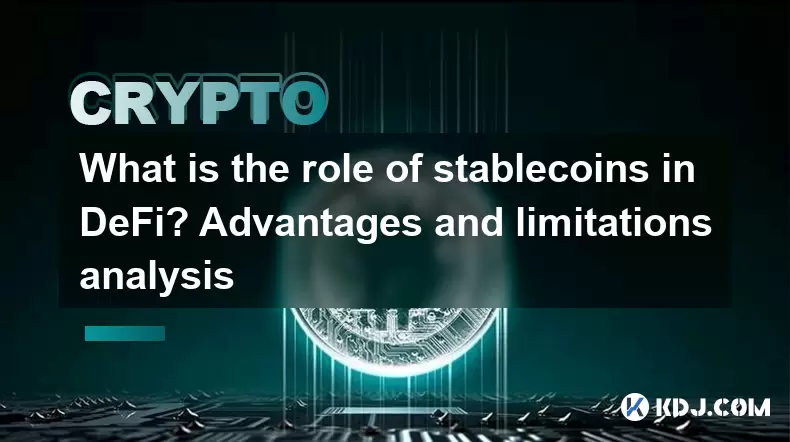
What is the role of stablecoins in DeFi? Advantages and limitations analysis
Jun 14,2025 at 06:28am
Understanding Stablecoins in the DeFi EcosystemStablecoins play a pivotal role in the decentralized finance (DeFi) landscape by providing a bridge bet...
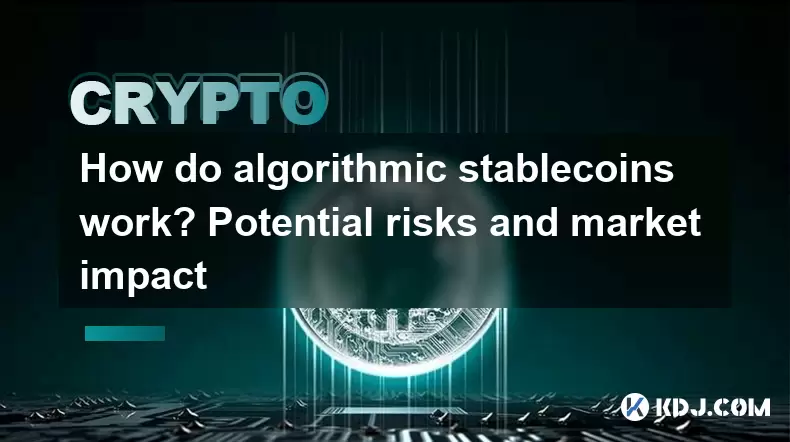
How do algorithmic stablecoins work? Potential risks and market impact
Jun 12,2025 at 02:07pm
Understanding Algorithmic StablecoinsAlgorithmic stablecoins are a type of cryptocurrency designed to maintain a stable value relative to a specific a...
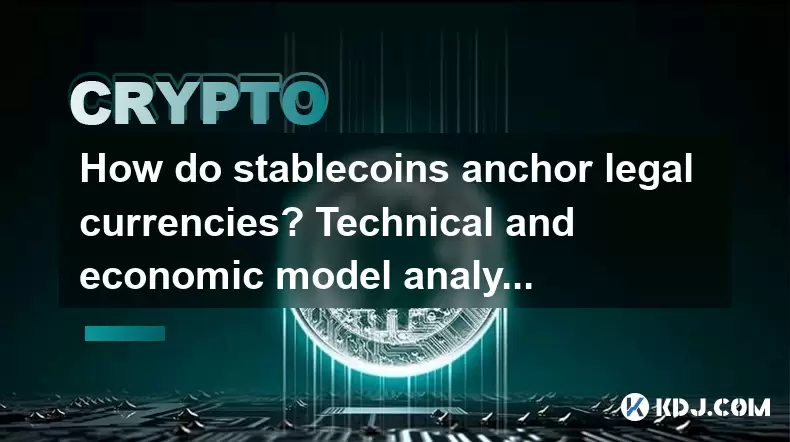
How do stablecoins anchor legal currencies? Technical and economic model analysis
Jun 16,2025 at 08:43am
Understanding the Concept of StablecoinsStablecoins are a category of cryptocurrencies designed to maintain a stable value relative to a specific asse...
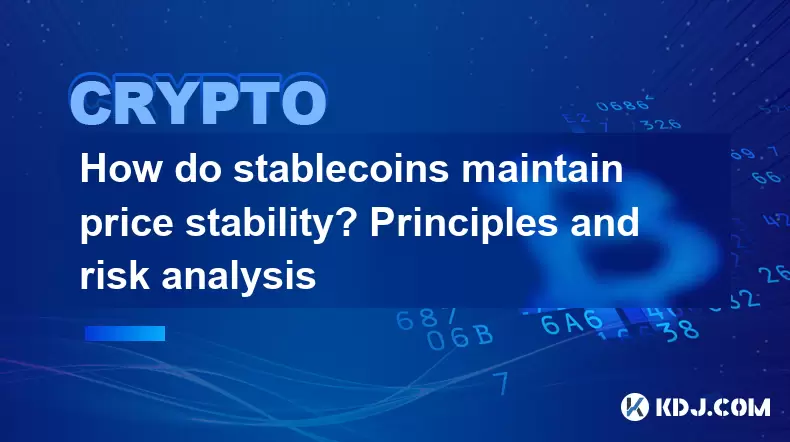
How do stablecoins maintain price stability? Principles and risk analysis
Jun 11,2025 at 12:01am
Understanding the Mechanisms Behind Stablecoin StabilityStablecoins are a category of cryptocurrencies designed to minimize price volatility, often pe...

What is the operating mechanism of stablecoins? In-depth exploration of its stability principle
Jun 10,2025 at 09:28pm
Understanding the Core Concept of StablecoinsStablecoins are a unique category within the cryptocurrency market, designed to address one of the most s...

What is the difference between decentralized stablecoins and centralized stablecoins? Pros and cons comparison
Jun 15,2025 at 09:42am
What Are Stablecoins and Why Do They Matter?Stablecoins are a category of cryptocurrencies designed to maintain a stable value, usually pegged to an e...

What is the role of stablecoins in DeFi? Advantages and limitations analysis
Jun 14,2025 at 06:28am
Understanding Stablecoins in the DeFi EcosystemStablecoins play a pivotal role in the decentralized finance (DeFi) landscape by providing a bridge bet...

How do algorithmic stablecoins work? Potential risks and market impact
Jun 12,2025 at 02:07pm
Understanding Algorithmic StablecoinsAlgorithmic stablecoins are a type of cryptocurrency designed to maintain a stable value relative to a specific a...

How do stablecoins anchor legal currencies? Technical and economic model analysis
Jun 16,2025 at 08:43am
Understanding the Concept of StablecoinsStablecoins are a category of cryptocurrencies designed to maintain a stable value relative to a specific asse...

How do stablecoins maintain price stability? Principles and risk analysis
Jun 11,2025 at 12:01am
Understanding the Mechanisms Behind Stablecoin StabilityStablecoins are a category of cryptocurrencies designed to minimize price volatility, often pe...

What is the operating mechanism of stablecoins? In-depth exploration of its stability principle
Jun 10,2025 at 09:28pm
Understanding the Core Concept of StablecoinsStablecoins are a unique category within the cryptocurrency market, designed to address one of the most s...
See all articles

























































































